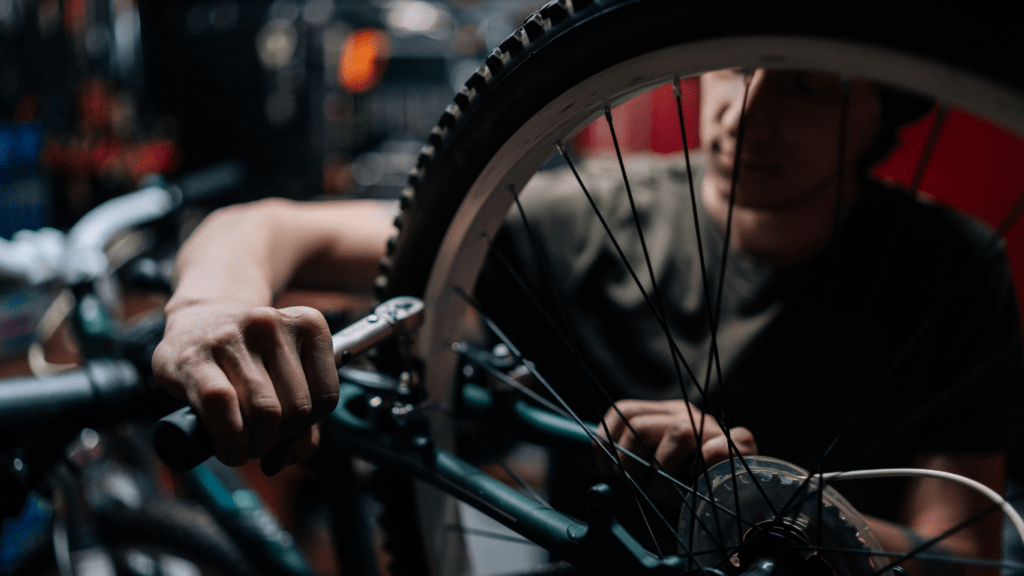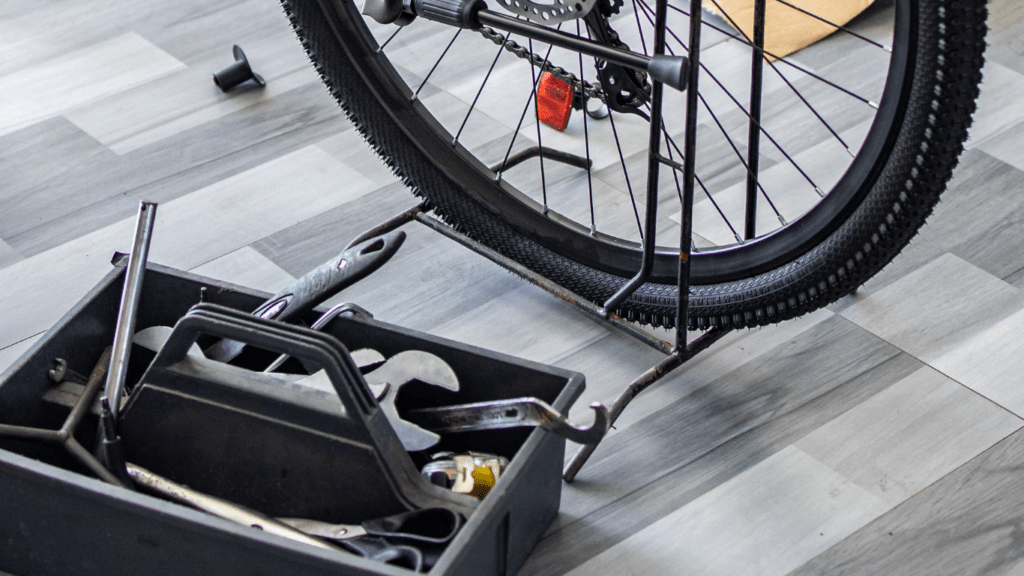The Importance of Regular Bike Maintenance
Regular bike maintenance ensures that my rides remain smooth and safe.
- Consistent upkeep helps identify potential issues early, preventing breakdowns and costly repairs.
- A well-maintained bike lasts longer, delivering peak performance and reliability.
- Check tire pressure weekly to reduce wear and increase fuel efficiency.
- Properly inflated tires provide better traction and smoother rides.
- Clean and lubricate the chain monthly, removing dirt and debris that could cause premature wear. A clean chain increases drivetrain efficiency.
- Inspect brakes frequently. Promptly replace worn brake pads to ensure effective stopping power. Failure to do so could compromise safety.
- Ensure cables and housing are in good condition, as worn cables could lead to inconsistent braking.
- Regularly inspect the gears for worn teeth or shifting issues.
- Properly functioning gears make for efficient pedaling and a more enjoyable ride.
- Adjust derailleur settings when shifting feels irregular.
By maintaining my bike regularly, I enhance its performance and extend its lifespan, leading to more enjoyable and reliable rides.
Cleaning Your Bike
Keeping your bike clean is crucial for maintaining optimal performance. Regular cleaning prevents rust, dirt buildup, and wear.
Washing the Frame and Wheels
A clean frame and wheels enhance both performance and appearance. Use water and mild soap to gently scrub the frame. Avoid high-pressure water which can damage components.
Use a sponge or soft brush for stubborn dirt. Make sure to clean the wheels and rims carefully, removing any debris stuck between the spokes or around the brake pads.
Lubricating the Chain and Gears
Lubricating key parts ensures a smooth ride. After cleaning, let the chain dry completely. Apply a suitable bike lubricant to each chain link, then wipe off any excess.
Make sure to lubricate the gears to keep them shifting smoothly. Avoid over-lubricating, as this can attract more dirt. Regular lubrication reduces wear and prevents rust, extending the life of your drivetrain.
Checking and Maintaining Tires

Maintaining tires is crucial for bike performance and safety. Regular checks and upkeep extend tire life and ensure a smooth ride.
Assessing Tire Pressure
Monitoring tire pressure maintains optimal performance. Use a pressure gauge to check the psi (pounds per square inch). Road bikes typically require 80-130 psi, while mountain bikes need 30-50 psi.
Inflate tires to the manufacturer’s recommended pressure, found on the tire sidewall. Proper pressure improves such as
- handling
- reduces flats
- enhances speed
Inspecting for Wear and Tear
Regularly inspect tires for damage. Check for cracks, cuts, and bulges. Look for significant tread wear, which can indicate the need for replacement.
Rotate tires regularly to ensure even wear, especially if one tire shows more wear than the other. Replace tires showing considerable wear or damage to prevent blowouts and ensure peak performance.
Brake Maintenance
Brake maintenance ensures safety and optimal performance. Inspecting brake pads and adjusting brake cables is essential.
Checking Brake Pads
Worn or damaged brake pads reduce stopping power. Inspect brake pads every 1-2 weeks. Look for wear indicators on the pad surface.
If pads are less than 1/4 inch thick or have visible damage, replace them. Check for debris that can affect performance. Clean pads with a damp cloth to remove dirt and grime.
Ensure pads align correctly with the rim to avoid uneven wear. Misalignment decreases braking efficiency.
Adjusting Brake Cables
Loose or tight brake cables impact braking response. Test brake lever pressure. When pulling the lever, it should not touch the handlebars. Use a barrel adjuster to fine-tune tension.
Turn clockwise to loosen, counterclockwise to tighten.
Inspect cables for fraying or damage. Replace damaged cables immediately. Adjust cable tension by loosening the anchor bolt, pulling the cable tight, then securing the bolt.
Check brakes for even engagement on both sides. Uneven engagement reduces stopping power and can cause wheel damage.
Tune-Ups and Professional Checks
Regular tune-ups and professional checks can significantly boost your bike’s performance. Knowing when to seek expert help and understanding tune-up components ensures your bike stays in top shape.
When to Seek a Professional Bike Mechanic
Occasionally, minor adjustments can be handled at home, but complex issues require professional assistance.
For instance, if your bike’s shifting is erratic despite adjustments, or you notice persistent squeaks, it’s time for an expert. Mechanics use specialized tools and have the expertise to identify and fix underlying problems efficiently.
Understanding Bike Tune-Up Components
A comprehensive bike tune-up covers several key components. Typically, a mechanic cleans, lubricates, and inspects moving parts.
They adjust derailleurs for smooth shifting, check brake function, and tighten bolts. Wheel truing ensures proper alignment, preventing wobbles.
These elements collectively enhance your bike’s reliability and performance.

 I’m Brendamee McCartyierr, and as the founder of Cycle Smooth Ride Long, I'm thrilled to bring you the ultimate resource for all things cycling. Whether you're a seasoned rider or just starting on your cycling journey, our mission is to support your passion for two wheels with trusted advice, insightful reviews, and expert tips.
Cycling is more than just a hobby—it's a lifestyle that promotes health, freedom, and adventure. At Cycle Smooth Ride Long, we’re committed to making your ride smoother, longer, and more enjoyable by providing you with the latest in cycling news, nutrition advice, fitness tips, and gear reviews. We also cater to beginners, offering comprehensive guides to help you get started and build confidence on the road.
I’m Brendamee McCartyierr, and as the founder of Cycle Smooth Ride Long, I'm thrilled to bring you the ultimate resource for all things cycling. Whether you're a seasoned rider or just starting on your cycling journey, our mission is to support your passion for two wheels with trusted advice, insightful reviews, and expert tips.
Cycling is more than just a hobby—it's a lifestyle that promotes health, freedom, and adventure. At Cycle Smooth Ride Long, we’re committed to making your ride smoother, longer, and more enjoyable by providing you with the latest in cycling news, nutrition advice, fitness tips, and gear reviews. We also cater to beginners, offering comprehensive guides to help you get started and build confidence on the road.
